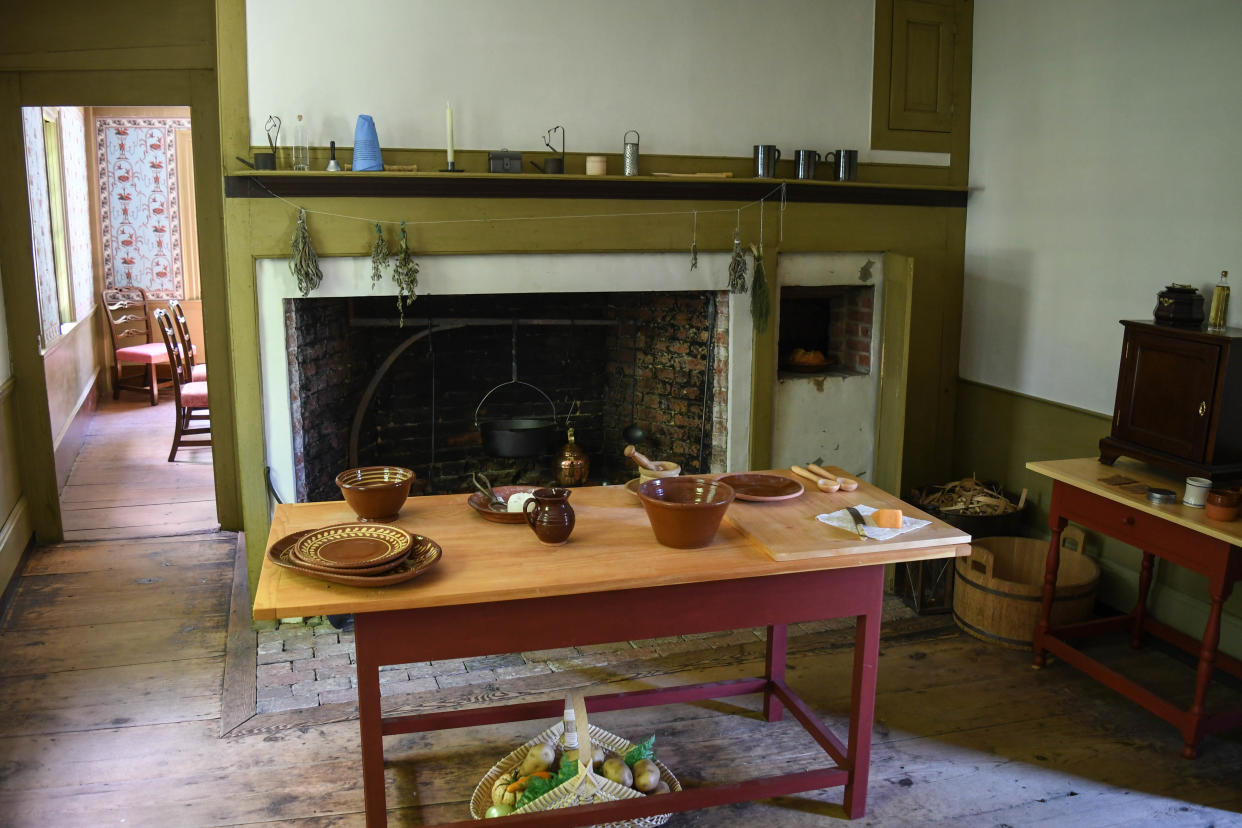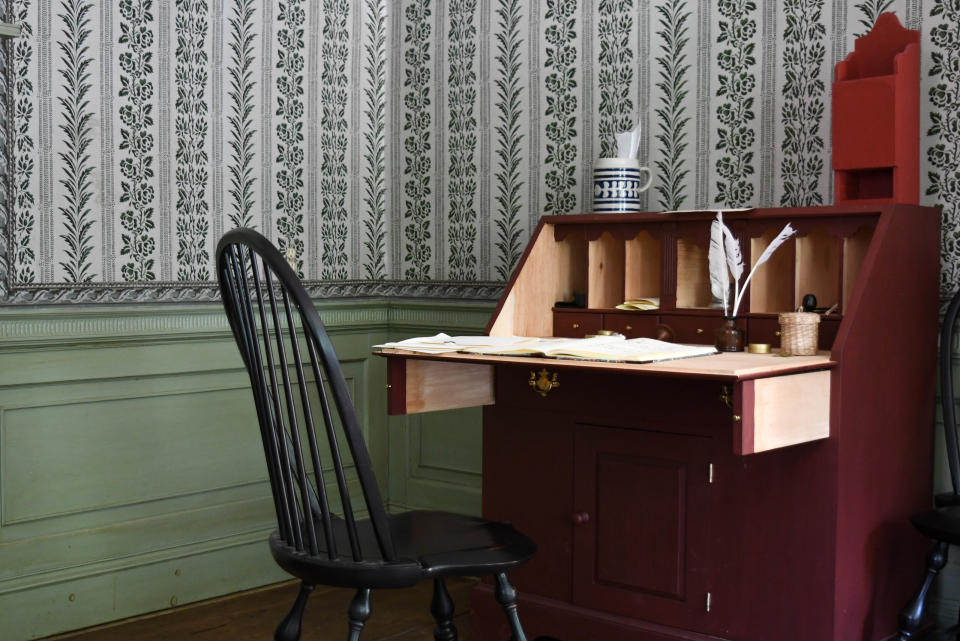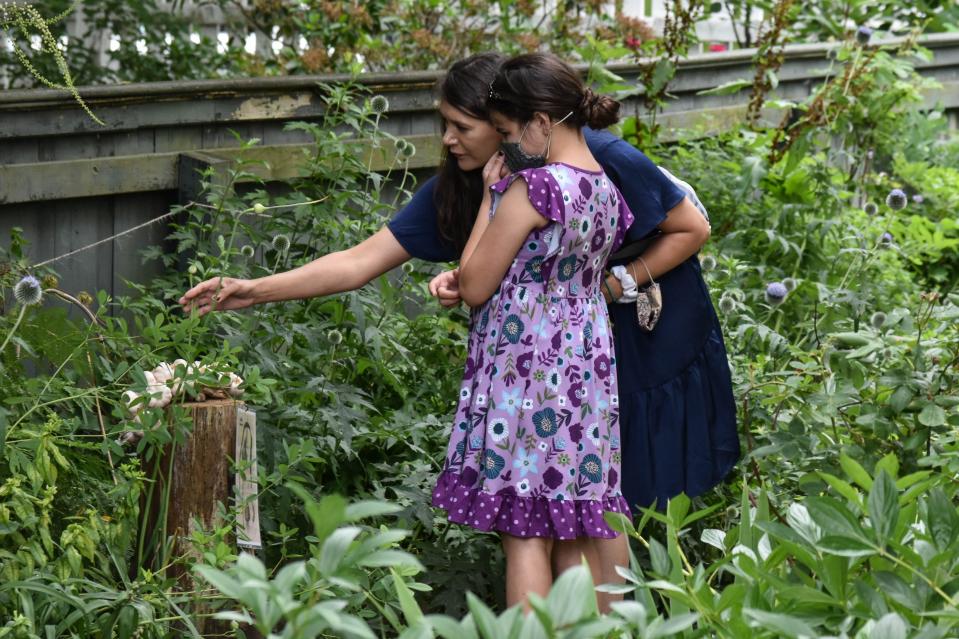Strawbery Banke Museum debuts new interactive exhibit

PORTSMOUTH — Strawbery Banke announced the grand opening of a new hands-on and immersive exhibit for the 2023 season. Unlike the Museum’s other furnished and exhibit houses, the Walsh House’s first-floor rooms are furnished with touchable, reproduction objects interpreting the home and life of a sea captain and his family in circa 1800. Visitors are invited to sit at the dining table, lie on the bed, open drawers, and try on costumes to better understand everyday life in 1802 and draw connections between the past and present. The Walsh House exhibit, made possible in part by the Institute of Museum and Library Services (IMLS), is included with general museum admission and is open daily from May 1 through Oct. 31.
Strawbery Banke identified the opportunity to reinterpret the Walsh House in 2017 through the Museum’s Long Range Interpretive Plan (LRIP), which was a three-year planning process supported by an initial grant from IMLS. The plan determined a need for better interpretation of the site’s maritime history prior to the filling in of the tidal inlet, which is a critical piece of history of the Puddle Dock neighborhood. Additionally, surveys of Museum visitors indicated a strong desire for more interactive activities at the Museum.
In 2019, Strawbery Banke Museum applied for and received an IMLS Museums for America grant for the Walsh House reinterpretation, which provided critical support to obtain reproductions for hands-on use, create accurate period garden, develop new interactive programs, and evaluate the reinterpretation plan for further refinement.
Over the past four years, Jonathan Brown, Strawbery Banke Director of Visitor Services and Project Manager of the Captain Walsh Reinterpretation Project, Maud Ayson, Implementation Consultant, Christine Ermenc, Executive Director of the Windsor Historical Society, Nicole Woulfe, Social Studies Teacher at Sanborn Regional Middle School, and a cross-departmental staff team, worked to install reproduction furnishing, textiles, and other household goods, recreate a period-appropriate garden, and develop programs for a wide range of audiences.
“The Museum was extremely fortunate to have Keyran Walsh’s estate inventory as a reference for furnishing the exhibit,” said Brown. Additional research helped to fill in the gap of the furnishing plans and identify members and characteristics of the Walsh family. However, there are still a lot of mysteries to uncover so research on the Walsh family will be an ongoing project.
“Strawbery Banke is so excited to share the Walsh House exhibit with Museum visitors this season,” said Linnea Grim, President and CEO, Thomas W. Haas Endowed Chair. “Our deepest thanks to IMLS and the consultants for making this exhibit possible. How wonderful it is for visitors of all ages to engage with Portsmouth’s and the Puddle Dock neighborhood’s history in a fun and innovative way. It’s our hope that by interacting with the items in the house, visitors gain an understanding of Portsmouth’s importance as an international port and the Puddle Dock’s role in that history.”

Strawbery Banke encourages visitors to become history detectives when entering the Walsh House. By investigating objects, opening drawers, reading journals and ledgers, and asking questions, they take an active role in learning about the family members and what their lives were like.
“It is wonderful to see people start investigating, finding clues to the past, then watching their eyes light up when they finally make those connections” continued Brown. “That is definitely a highlight of having the Walsh House open to the public again.”
Located on Washington Street, adjacent to the Lawrence J. Yerdon Visitors Center, the Walsh House was built in c. 1796. It was named for sea captain Keyran Walsh, who owned the property from 1797-1807. Walsh, who lived in Portsmouth from 1782 on, captained ships and successfully traded in New Hampshire lumber and West India goods, traveling to ports around the Atlantic. While successful in his trade, Walsh was in a dangerous occupation, battling restrictive Spanish trade laws and trying to avoid the British Navy. In 1799, he lost his ship and her cargo after an encounter with a British man-of-war, and he died on a voyage from South America to Charleston, South Carolina, in 1807.

In 1969, the house was moved about 80 feet north of its original location and was placed on a new foundation. A bequest from Dr. Frederick Sanborn of New York City allowed for the house to be initially restored. For nearly a decade, the Walsh House was closed to the public.
The Walsh House is open daily from May 1 through Oct. 31 and is included with general museum admission. For more information about the Walsh House, visit StrawberyBanke.org/houses/walsh.cfm
This article originally appeared on Portsmouth Herald: Strawbery Banke Museum debuts new interactive exhibit

